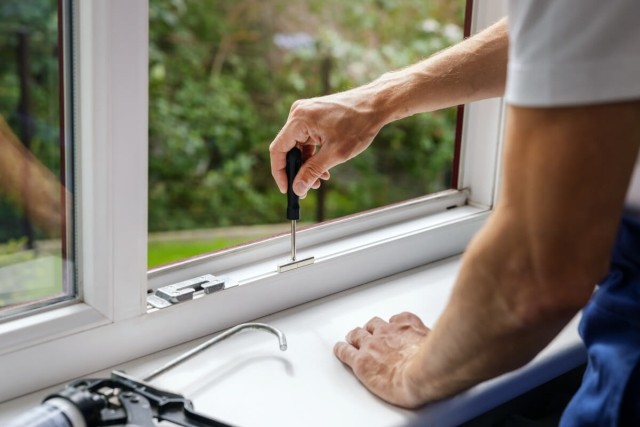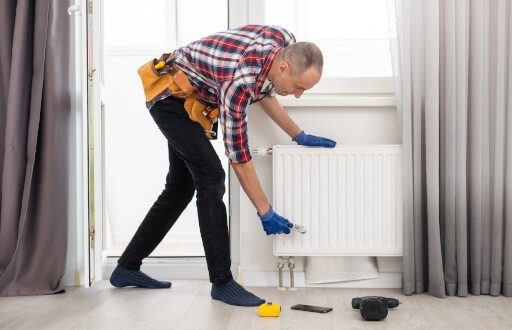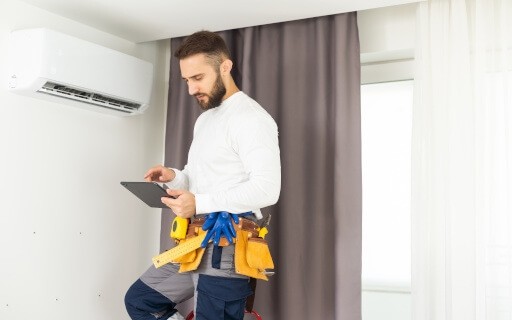A landlord doesn't always have to get rid of mold in a rental property, especially when a renter's behavior is directly responsible for the problem. However, many situations call for intervention, including:
- Chronic or widespread mold
- Mold in a vacant rental
- Cleanup after a flood or similar disaster
Mold is a serious issue in itself, but it's indicative of an even more pressing concern that could lead to big problems down the road. Moisture is what allows mold to grow, and addressing it is the first step in a mold remediation strategy. After that, physical removal of mold is a straightforward job, although it might be a large one. The Environmental Protection Agency and the Centers for Disease Control and Prevention lean strongly in favor of professional remediation for large infestations.
Do you need to test mold for toxicity?
Mold is everywhere, and people breathe spores all the time. Obviously, not all strains are toxic, or everyone would be sick. However, the fact that the discoloration on a bathroom wall could be caused by a benign strain or a dangerous one, such as stachybotrys, is immaterial when it comes to the question of removal.
No onsite test can definitively distinguish between mold strains. Only an expert armed with a microscope and an encyclopedic knowledge of mold biology can do that. Even if testing were practical, the CDC advises against it because benign and toxic strains can grow side by side. If you see any type of mold, says the CDC, you should remove it. Don't waste your time testing it.
To get rid of mold, start with moisture control
Mold thrives in moisture. When you see it growing on a wall or in a corner, ask yourself where it's getting the water to survive.
Perhaps the air is humid and there isn't enough circulation. You may be able to remedy that. You could install an exhaust fan, a ceiling fan, or a duct booster fan. Installing a booster fan to amplify the output from the central air system sounds difficult and expensive, but it's neither. Some are designed to replace a standard vent grille. Remove the existing grille, set the booster fan in its place, and plug it in. It's that easy.
The mold colony may indicate the presence of a plumbing or roof leak. If so, you'll want to fix that, or you'll end up with problems much worse than mold. Wood rot is a fungus that also grows in moist conditions, and if rot sets in, things start getting expensive.
What about using bleach to get rid of mold?
Bleach is often mentioned as the go-to disinfectant and cleaner for mold, but it has limitations. Household bleach has a high surface tension that prevents it from soaking into porous materials, such as wood and drywall. When you treat mold on these materials with bleach, the growth you can see dies, but the spores are actually nourished by the water that soaks in after the bleach itself evaporates. They can easily grow into a colony stronger than the last one.
Because bleach gives you a false sense of security, the EPA and OSHA have walked back their previous insistence on using it. If you want to use a disinfectant to get rid of mold, vinegar is a better choice, but for physical removal, all you really need is soap and water.
Bleach effectively kills mold on non-porous surfaces, such as tile, plastic, and stone, so you shouldn't avoid it altogether. You can make an effective cleaning solution by mixing 1 part household bleach with 10 parts water. Use this to clean bathroom fixtures, kitchen counters, vinyl floors, and other smooth surfaces.
Getting down to the job of mold removal
The recommended way to get rid of mold on most surfaces is to scrub it with a solution of detergent or dish soap and warm water. Wearing gloves and a respirator, keep scrubbing until all the discoloration is gone. Change the water frequently.
1. Discard affected drywall
You can scrub mold off of a painted drywall surface, but if mold is growing on the drywall paper itself, you must replace the drywall. Some types of mold feed on paper and gypsum and, after a period of dormancy, will continue to grow, even if you paint the drywall with a product that contains a mildewcide.
2. Treat moldy wall framing
After removing moldy drywall, you'll probably find mold growing on the wall framing as well. Remove it by scrubbing with soap and water, and let the wood dry completely. Before hanging new drywall, treat the wood by dusting it with borax or a commercial borax-based mold abatement product.
3. Disinfect or discard affected carpeting
You usually have to throw away moldy carpeting for the same reason you have to discard moldy drywall, but you may be able to save a carpet if the mold isn't well established. Wash thoroughly with a solution of water and a commercial disinfecting cleaner, rinse well, and let the carpet dry thoroughly, preferably in the sun.
After you've scrubbed away all the mold, make sure everything has a chance to dry out. Keeping things dry is the best way to prevent the mold from returning.
You may need a pro
A large cleanup after a disaster such as a flood, a burst water pipe, or a ruptured water heater is usually best left to professionals. The reason isn't just convenience; mold remediation can be hazardous. Not only that, pros are better equipped to find and remove hidden mold. As a rule of thumb, any cleanup project that exceeds an area of 10-by-10 feet is one for a licensed cleanup team. As always, provide tenants with an easy way to report mold if they find it. Through Apartments.com, renters can submit maintenance requests online. You will receive a notification, and you can update your renters as the maintenance progresses.











